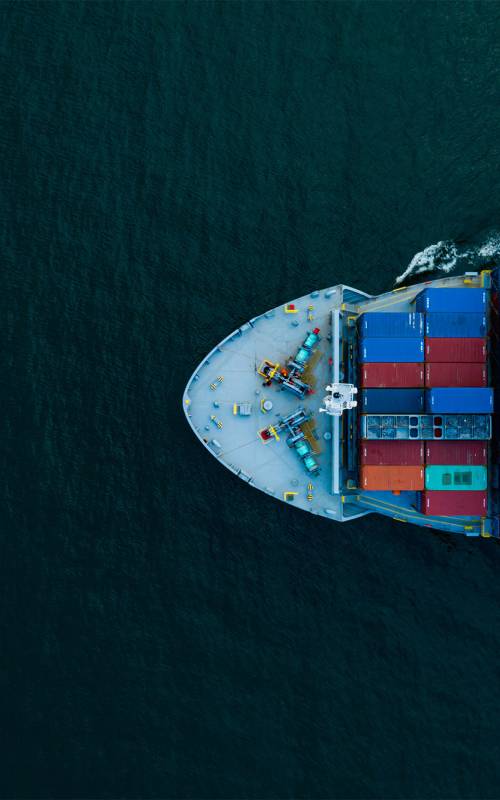Information on cargo ships
Global trade in goods in the way it is today would not be possible without cargo ships. These merchant ships sail the oceans of the world, but are also used in inland transport. Due to different goods and transport conditions there are a number of different types of cargo vessels. A refrigerated vessel is used when a cargo consists of temperature-controlled goods. These can be apples, grapes and coconuts, but also fruits such as pineapples or bananas. Meat and fish also require uninterrupted cooling during shipment.
If a seafreight forwarder chooses transport with ISO-Containers, a container ship must be loaded for this purpose. These vessels are designed for such transport. Some of these vessels are equipped with their own loading gear and have a cargo capacity of up to 3,400 TEU. If their tonnage is higher, a port with a container bridge must be selected for loading and unloading. These ship types currently transport about 90 percent of the general cargo in world trade. Bulk carriers are used for the shipment of loose bulk goods, which are also called bulk carriers as well as bulk freighters. These loose bulk goods can be cement, coal or ore, for example. Bauxite and phosphate also fall into this category. Bulk goods also come onto the transport route in liquid form. However, they are transported by tankers, the so-called tankers.
Goods with a particularly high weight are transported by heavy lift vessels. In accordance with its function, such a ship is equipped with heavy lift booms or heavy lift cranes. At present, the lifting capacity of tower cranes is 1,000 tonnes, while mast cranes can handle 900 tonnes. In order to compensate for offsets during loading work, heavy lift ships are equipped with extremely powerful ballast pumps. If a sea freight forwarding company consists of cars, a special form of RoRo ship, the so-called car transporter, is used. Most of its decks are kept low and have approximately the height of a car. This circumstance enables the car transporter to load a large number of cars. A disadvantage of this type of ship is the high deck superstructure. Especially during storms there is a risk of drifting.
Furthermore, in sea shipping, in addition to feeder ships, general cargo ships, coastal motor ships, landing ships and RoRo and LoLo ships are also used. In the inland transport, as in maritime shipping, types of ship such as the container ship, the car transporter and the refrigerated ship are encountered.



